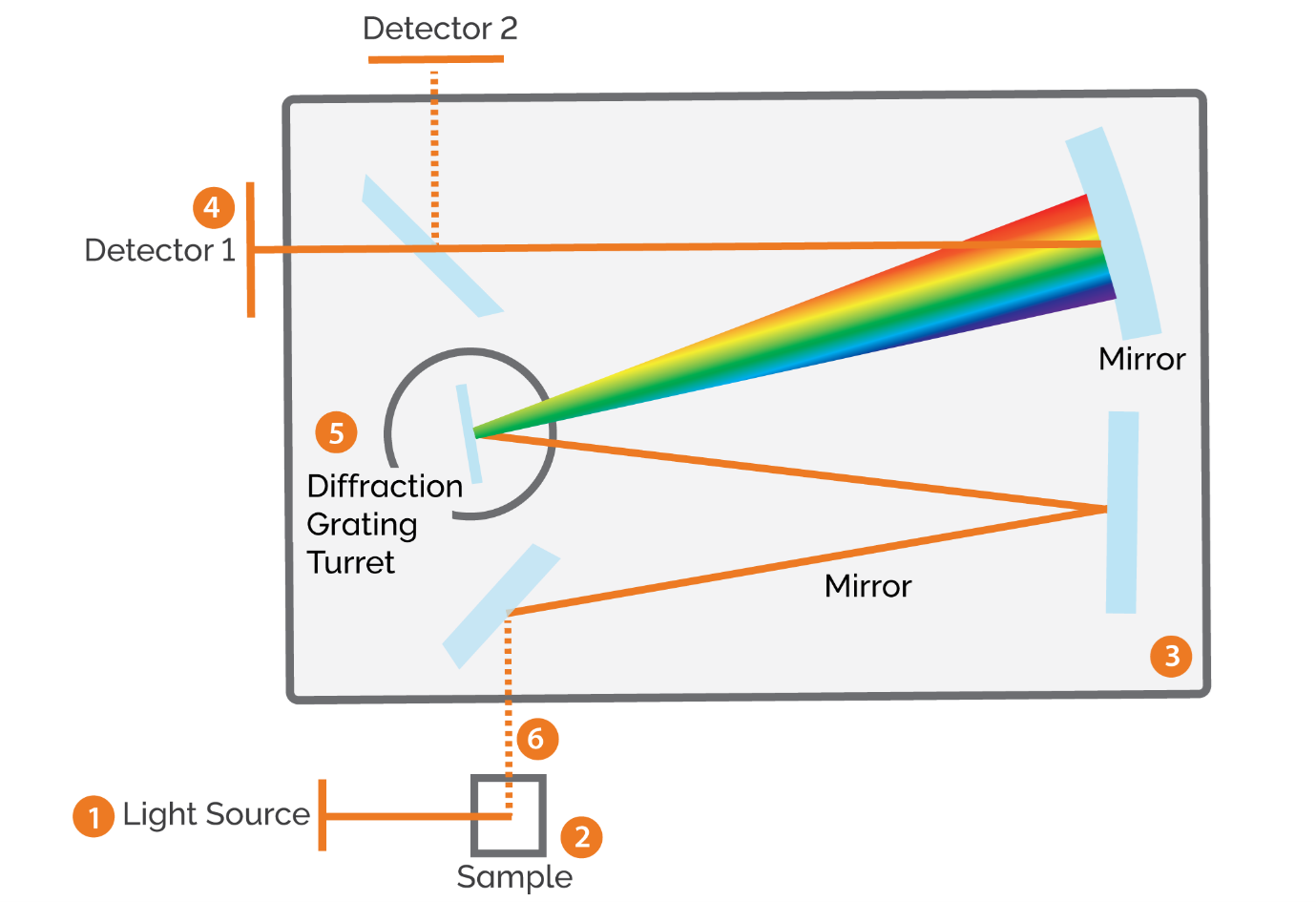Resources
 Part of the Oxford Instruments Group
Part of the Oxford Instruments Group
Expand
Collapse
 Part of the Oxford Instruments Group
Part of the Oxford Instruments Group
Near-Infrared (NIR) spectroscopy is a valuable spectroscopic technique widely used in analytical chemistry, agriculture, pharmaceuticals, and the food industry. In this article, we will look at the essential components needed to build a NIR spectrometer and how they fit together to study chemical elements.
The configuration of the components is critical. Andor offers 5 different spectrometers for NIR, all based on the Czerny-Turner configuration. This layout consists of 2 concave mirrors with a planar diffraction grating in between. The first mirror collimates the light source, the second focuses the light from the grating onto the detector. If a beamsplitter is used there can be 2 detectors for simultaneously studying different aspects of the same system. See below in Fig 1.

Fig 1. Example of a NIR Spectrometer concave mirror system.
The first component in an NIR spectrometer is the light source. NIR spectrometers use a stable and intense light source that emits in the near-infrared range. Andor Technology provides a range of NIR light sources, such as Mercury-Argon (Hg-Ar) or Mercury-Neon (Hg-Ne) pen ray lamps. Alternatively a diode laser can be input using a 50 or 100 mm fibre optic.
In this type of spectrometer the sample is placed outside the spectrometer and before the entrance slit. For example, to quality test during food production the sample may be in a beaker with the light source directed through it. Transmission, reflectance or fluorescence measurements are made by directing the emerging light through the spectrometer entrance slit.
The monochromator is another name for the arrangement of mirrors, the grating and entrance and exit slits.
Choosing the right detector is critical in NIR spectrometry. NIR detectors may be InGaAs (Indium Gallium Arsenide) and deep cooled CCD detectors, which are highly sensitive in the NIR region. These detectors offer excellent signal-to-noise ratios, enhancing the accuracy of NIR measurements. Andor's detectors are some of the best on the market, giving the best spectra possible.
The grating is responsible for dispersing the incoming NIR light into its spectral components. We have grating turrets that can hold up to 3 gratings. They are precision-engineered with excellent dispersion properties, enabling accurate spectral analysis. Protected silver coated optics and gratings are available for use when working with NIR.
Fibre optics play a crucial role in NIR spectrometry, directing the light from the sample into the spectrometer. Our specialized off-the-shelf and custom-designed optical fibres transmit NIR light efficiently, minimizing signal loss.
Andor provides user-friendly software solutions that provide accurate data acquisition and analysis making it easier to derive meaningful insights from your NIR measurements.
Building a reliable NIR spectrometer requires careful positioning of a number of precisely designed and manufactured components. Inside the box, the precision engineered optical components are carefully positioned to diffract and direct the NIR light onto the detector. By carefully selecting the right components, Andor scientists create NIR spectrometers perfect for specific applications, from material analysis to quality control in industries such as pharmaceuticals and agriculture.
Date: November 2023
Author: Dr. Jo Walters
Category: Solution Note
